CES 2015 ended earlier this month, and like last year, a significant portion of the show floor was dominated by digital health products. Companies showed off a number of activity trackers, sleep devices, an oral health tracker, connected weight scales, and a few adhesive temperature devices. And also like last year, most of the products MobiHealthNews covered were demos, prototypes, and concepts that the companies said would be available for pre sale sometime this year.
But, of course, companies that demo products at CES often do not launch these offerings on schedule or sometimes at all. So, MobiHealthNews took a look at our round up of digital health device announcements during CES 2014 to see where these products are now.
We've separated the devices into three categories -- those that haven't launched, those that launched but at a different time or price point than initially announced, and those that launched as scheduled. First off, there were a handful of startups that have not brought their products to market yet.
 iHealth's Wearable ECG
iHealth's Wearable ECG
iHealth Lab, a subsidiary of Chinese medical device company Andon Health, revealed three new smartphone-enabled, wearable health devices at CES: a blood pressure monitoring vest, an ambulatory ECG device that (presumably) sticks to the wearer’s bare chest, and a wristworn pulse oximeter device. The company said at the time that none the devices have FDA clearance. If FDA clearances were secured on time, the company expected the three devices to ship in the second half of 2014.
Neither of the devices iHealth unveiled at CES 2014 have been FDA cleared yet.
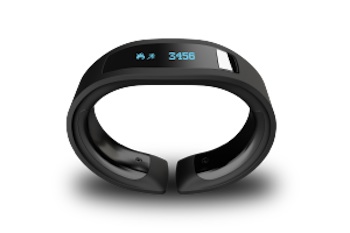
Movea partnered with Texas Instruments and Xm-Squared to create the G-series, which Movea called the most accurate wristband tracker yet. The company said the device could detect posture, day-to-day activity, sports workouts, and sleep.
Movea was acquired by sensor developer InvenSense in July 2014. The company's page now says the G-Series' reference design is available, but links on the site to the G-Series reference design are redirected to the company's press page.
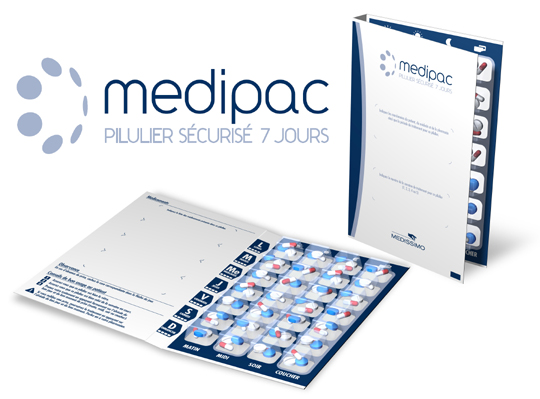
French pill box maker Medissimo announced a smart pill box, called imedipac. The company explained at CES 2014 that the device both reminds patients to take pills and tracks when they have using GPS. Users can review data from the device on their computer or on specialized phone or tablet apps. It can send alarms via text message, email, or even call you on the phone and leave voice messages.
Medissimo's website says imedipac is "coming this winter". The company was also in attendance at CES 2015.
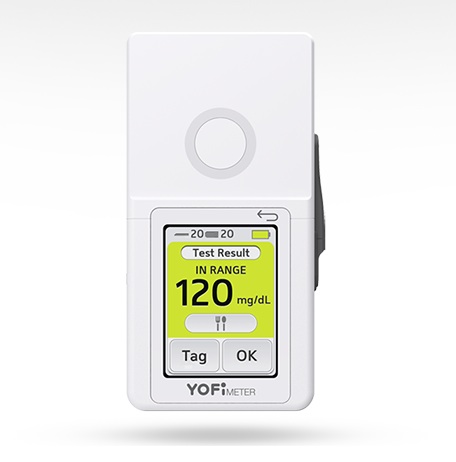
YOFiMeter is an “all-in-one” cellular connected glucometer, developed in a partnership with Qualcomm Life. The device is cloud-based, can be operated one-handed, and will be sold without monthly fees. At the time the company said it was awaiting FDA clearance.
According to the company's website, the YOFiMeter is not yet cleared for sale.

Paris-based Kolibree announced its electric toothbrush. According to the company, the sensors in the brush detect not only how long you brushed your teeth, but also whether you hit all the hard to reach places between gums and teeth. Those stats are sent via Bluetooth to a mobile app, where users can choose either to keep them private or to share them their family or dentist. The company planned on launching via Kickstarter and making its product available by the third quarter of 2014. The price would range from $99 to $200 depending on the model.
Kolibree launched its Kickstarter in April, but it did not ship in the third quarter of 2014 as expected. The comments on Kolibree's Kickstarter indicate that the devices have not yet been shipped. On the website, the company said the toothbrush was not yet available to the public, but a presale would be coming soon.

Jaybird, a technology company that previously specialized in Bluetooth headphones, announced an activity tracker, the Jaybird Reign. The Reign is a wristband that tracks activity and sleep, and the company was positioning it as a motivational, behavior-changing device. The Go-Zone feature prompts users to get active when they sit for too long, and the device can distinguish between walking, running, swimming, and biking. The company did not announce a price for the device, but it was due out in 2014.
Jaybird's Reign will cost $199.95, but it did not come out in 2014. The website says the device is "coming soon".
A few of the devices announced at CES 2014 did launch, but made changes to the price, launch date, or product.
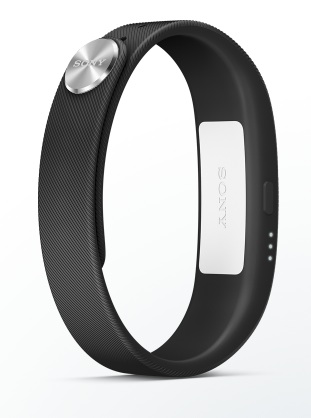
The Sony Core was announced as a small sensor pack that fits into a wristband, but can be worn in a shoe or clipped on to clothing. It has no screen, so it relies on the user’s smartphone to display the data it collects, which includes activity data. At Sony’s launch event, they positioned the Core as an activity tracker that would also track social and entertainment behavior on the user’s phone, and display a “life-logging” timeline on a connected app.
Sony launched the device in June for $99, but it was renamed the Sony SmartBand. Sony’s Lifelog app automatically, passively tracks what the user does throughout the day using an accelerometer in the SmartBand. The focus, as expected, is much more on a general quantified view of the user’s day than a specific focus on fitness.

Polar refers to its latest sports watch as a training computer, and it includes some features useful to athletes that you won’t find on just any activity tracker. It can measure heart rate while swimming and has a built-in barometric pressure sensor, as well as continuous GPS tracking. The device can also send all its collected data to a smartphone, but it stores up to four weeks of training history in the watch itself. The device was expected to launch in April for $449.95.
Instead, the Polar V800 was released in mid-June and the device is available for $469.95.
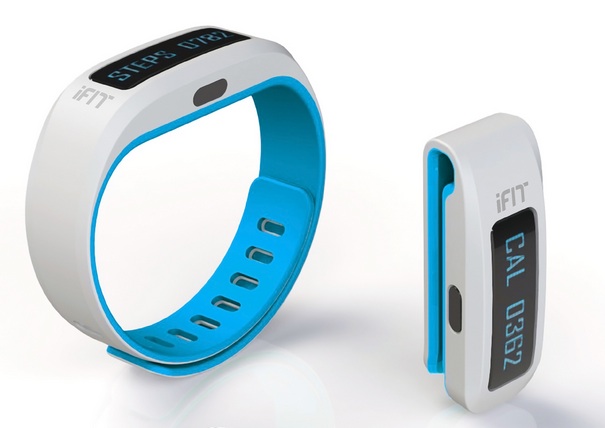
iFit announced several devices at CES including an activity tracker, an Internet-connected fitness equipment offering, and GPS-tracking apps. The activity tracker is called the iFit Active Tracker. It can be worn as a clip-on device or on a wristband and it tracks activity, distance, steps, calories burned, and sleep patterns, sending the data to the user’s phone. The company said the tracker would be available in April for $129.
iFit's tracker launched sometime in April for cheaper than it had initially anounced. Instead of $129, the tracker costs $79.

One of the most talked about — and strangest — new products out of CES 2014 was a sensor device called “Mother.” The device looks like a bowling pin with a face and comes with four smaller sensors, called motion cookies. The cookies can be attached to different things to monitor use: a toothbrush to monitor brushing, a water bottle to monitor water intake, or a pill bottle to monitor medication adherence. The sensors store all the data in a smartphone app, which can also be set up to give alarms whenever certain conditions are met. The starting price — for a Mother and four cookies — is $222.
Sen.se's cookies are on sale on the company's website for $299, slightly higher than expected.
Finally, several devices launched as expected without changing much since their CES 2014 announcement:

Razer, an electronics company that’s previously produced laptops, tablets, and gaming peripherals, announced a “smart band” called Nabu. The device pairs with a smartphone to display incoming calls and messages. It features two screens — one on the top of the band and one on the bottom — and contains an accelerometer and an altimeter to collect fitness data.
The device went through three waves of pre-orders in 2014. Since announcing the Razer Nabu, the company developed Razer Nabu X, which just sold out of its first wave of pre-orders.

Virgin Pulse, the corporate wellness and engagement company formerly known as Virgin HealthMiles, launched its own proprietary activity tracker called the Virgin Pulse Max at CES in Las Vegas. The Max device is a small black box with a screen that can be clipped onto a belt or worn on the wrist. Although the tracker can sync via Bluetooth with a smartphone, it can also connect via USB to a computer to accommodate users who don’t have smartphones. The device tracks steps taken, calories burned, distance travelled, and active minutes. The company added that a firmware update system would allow the company to add sleep tracking in the future.
Virgin's device was available at time of announcement, and the sleep feature has since been added.
Withings blood pressure cuff and sleep sensor

Withings announced two new products which it plans launch in 2014: a Bluetooth-enabled update of the company’s upper arm blood pressure cuff and a two part sleep tracking system. The sleep system, called Withings Aura, consists of a sensor placed in the user’s bed and a bedside device that serves as both lamp and alarm clock. The new cuff had a CE Mark and was already on sale in Europe, but it was still awaiting FDA clearance. The Withings Aura system was set to launch in the spring with a starting price of $299, the company said.
Both of Withings' new products launched in 2014.

Posture startup Lumo Body Tech announced a new device, Life, which is considerably smaller than its predecessor, and instead of taking the form factor of a belt, the new device uses a magnetic clasp to clip to the wearer’s clothing. Lumo said Lift would cost between $59 and $79 during an upcoming crowdfunding campaign and more than that at retail. The company aimed to begin shipping the device by the summer.
Lumo Lift launched this year and now costs $99.

Garmin unveiled the Garmin vivoki, a small, clip-on, water-resistant activity monitor for employers. Vivoki will connect to Garmin’s app and online community, called Garmin Connect, which already syncs with existing Garmin devices. The new device also integrates with the API Garmin made available last fall.
The device launched earlier this year, and since then, Garmin has unveiled a new offering for employers, called the Garmin Connect wellness portal, to help them manage their corporate wellness programs. The portal is powered by the same technology behind Garmin Connect, a direct-to-consumer portal that allows users to sync Garmin activity tracker data, view training plans, and interact with the Garmin Connect community.
LG Lifeband Touch and PerformTek HeartRate headphones
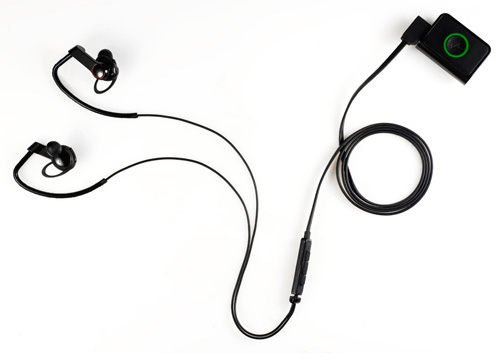
South Korean technology company LG announced an activity tracker and health-sensing headphones. The LG Lifeband Touch is a bracelet with a fully functional touchscreen, a feature currently more common to smartwatches than fitness bands. The device tracks heart rate in addition to the traditional steps-calories-distance package. It also has an altimeter and is water-resistant. It can also bring in data from other devices via Bluetooth and display it on the touchscreen, including data from another new product, heart rate-sensing headphones built by PerformTek. Both products were expected to roll out in the first half of 2014.
The devices were launched in late May.
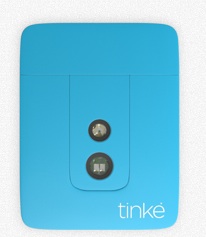
iPhone-connected pulse oximeter Tinke first made news two CES shows ago. The company’s big news in 2014 was a new version of its consumer pulse ox for Android. While the iOS version plugs in to the 8- or 16-pin connector at the bottom of the user’s device, the Android version syncs wirelessly via Bluetooth. Both versions measure heart rate, blood oxygen levels, respiratory rate, and heart rate variability when the user puts his or her finger and thumb on either side of the device. The device launched in 2014.
At CES 2015, Zensorium also announced a new product, a smartwatch that continuously tracks your mood, heart rate, and activity, while will go on sale for preorder. The device costs $169.15 if preordered and will be shipped in April 2015. It will retail for $199. Being’s most significant feature is its mood tracking. The device will map the user’s mood into four different zones, excited, distress, normal, and calm using heart rate and changes in blood pressure. It will also differentiate good stress from bad stress.
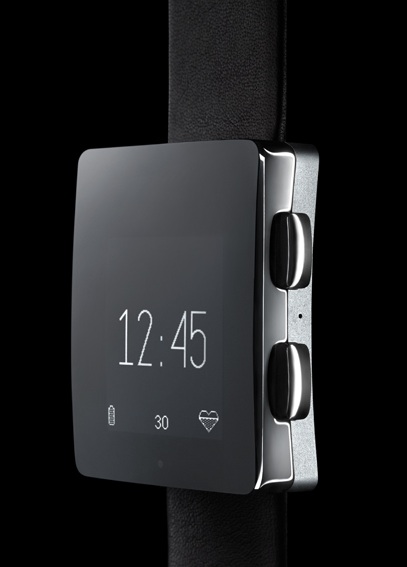
Wellograph announced a “wellness watch” is a health-tracking smartwatch with an LED screen that displays an analog or digital clockface centrally and fitness statistics on the bottom of the screen. In addition to an accelerometer, it includes a continuous heart rate sensor. The rechargeable battery lasts two weeks, or three months in watch-only mode.
The watch started shipping in August 2014. At CES 2015, Wellograph unveiled new software for the device that features sleep tracking and body readiness testing. In the new operating system, on top of activity tracking, the watch will give users information on their sleep cycles, if they were in deep or light sleep, and data on their REM sleep.

Consumer heart monitoring company Qardio debuted QardioArm, a wireless blood pressure monitor that delivers data to the user’s smartphone. The device is designed to be portable and easy to use, and it can send the data it monitors directly to the user’s doctor in addition to storing it in the app. Qardio said they would crowdfund the device on Indiegogo for an $85 pre-order price, and that it would ultimately retail for $99. QardioArm is the first of at least two planned products for the company, Qardio said. Next to come is QardioCore, a wearable ECG monitor with a similar design aesthetic.
Qardio not only crowdfunded and launched its blood pressure device, it also announced pre sale dates for future devices, a wearable EKG/ECG and a smart scale, which are both launching in spring 2015.

Epson America announced that it would be releasing both a health-tracking smartwatch and a fitness band in 2014. The devices would monitor heart rate, activity level, calorie burn and sleep patterns. The wearables would be smartphone-connected, but will also be able to store 480 hours of data on the devices themselves. Epson said it would offer the band for $129 and the watch for $199.
The prices are the same as expected and the devices are available for purchase.













